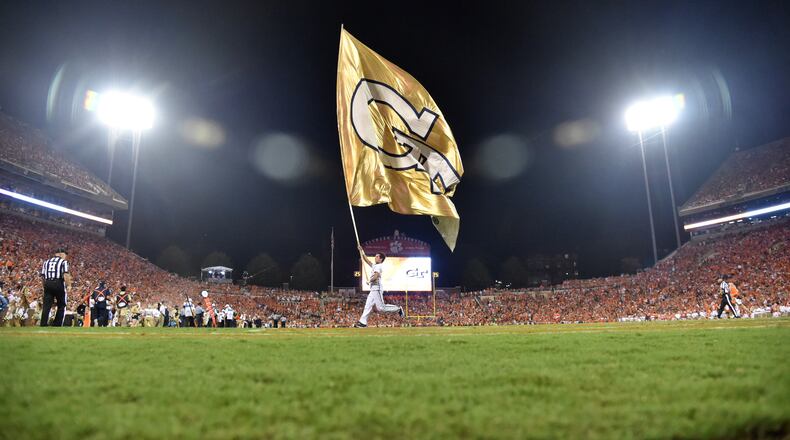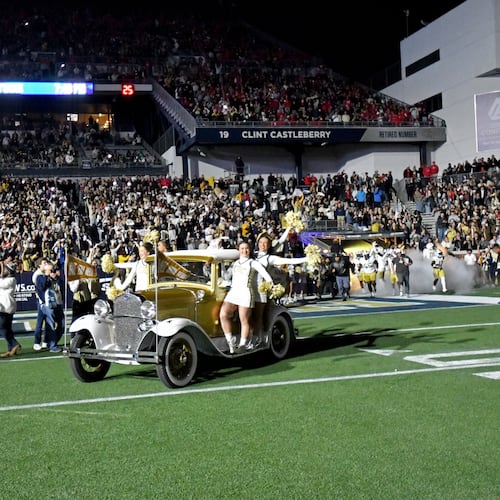Monday, the NCAA Division I Council approved a measure granting all spring-sports athletes an extra year of eligibility due to the cancellations of their seasons due to the coronavirus pandemic. Most notably, athletes competing in their senior seasons can come back but will not count against the scholarship or roster limits for their respective sports. However, the council also determined that schools will not be required to provide grants for those seniors at the same level as they received in the 2019-20 academic year.
Here are four questions that athletic-department administrators, coaches and athletes will be facing in coming weeks, at Georgia Tech and across Division I.
1. How will it be paid for?
This will be an added expense for all schools, and some athletic departments will be particularly pained, which is why the council chose not to require that schools grant the same level of aid to the returning seniors that it did for the 2019-20 academic year. A recent USA TODAY report estimated that power-conference schools could have additional scholarship costs of $500,000 to $900,000. That's combined with the reduction in distributions that the NCAA has been cut from $375 million to $225 million, money that goes to conferences and member schools.
Like most Division I schools, Tech isn’t flush with cash. In January, the athletic department projected to finish this fiscal year with a $700,000 deficit, which would deepen the deficit of the fund balance (essentially, the rainy-day fund) to $4.6 million. Projected revenues were $82.6 million and expenses were $83.3 million. Scholarship costs were $11.7 million.
The revenue figures took into account the projected distribution from the ACC, which could certainly drop given, for instance, the cancellation of the ACC men’s basketball tournament, and also expected revenues from ticket sales for baseball.
That said, a preliminary projection for the 2021 fiscal year presented last June projected the department to have a $2.3 million surplus — a figure that counts on the start of the football team’s series at Mercedes-Benz Stadium and increased revenues from the ACC Network. Provided the football season takes places as scheduled, that would go a long way to enabling Tech to cover the extra scholarship expenses.
2. How many seniors will come back?
That’s unclear. It will not be a 100% return rate. Many athletes, at Tech and nationwide, will decide that they’re ready to move on from college. Plenty will earn their degrees this spring and have job offers waiting or plans for graduate school and deem those options more important than playing a final season. Others may simply be ready for the next chapters of their lives to begin.
And for schools or teams that aren’t able to offer would-be returnees the same scholarship level that they had before, perhaps those decisions will be made very easy.
It should be remembered that not all college athletes on scholarship are on full scholarships. Among sports that Tech offers, only football, men’s and women’s basketball, volleyball and women’s tennis offer full rides. Athletes in other sports receive partial scholarships, meaning they have to find ways to pay for the rest of their tuition and fees. That will certainly enter into the thought process for many of the would-be returning seniors. (Tech in-state tuition is $10,258. Out of state, it’s $31,370. Total estimated costs for non-freshmen are $31,572 in-state and $52,684 out of state.)
(Another possible wrinkle: Could an athlete at College A who doesn’t get the grant that he or she had previously leave as a grad transfer for College B, where he or she could get the same amount of aid? Along those same lines, Ivy League athletes are not allowed to compete at their schools after they graduate. Unless league rules are changed or suspended, there could be a flood of Ivy League graduates transferring to finish their careers elsewhere.)
3. How will rosters be managed?
Consider a team that has a large senior class and an equally large signing class coming in. If many or all of the seniors return, that doesn’t bode well for the immediate playing time for the incoming freshman class. For that matter, returning players who weren’t competing much this spring may be in the same position again in 2021 if rosters are essentially frozen from this year to next. (It’s true that those returnees also have an extra year of eligibility to use, but they’ll also eventually face the same stay-or-go decision after their fourth year on campus, weighing the benefits of moving on after graduation and foregoing a fourth season of competition against the positives of staying.)
In baseball, where the best players are typically drafted at the end of their junior seasons, the development of freshmen would likely be delayed, a potentially costly setback for the first third of their time in college. (Baseball is a particularly tricky sport in this instance because of the draft and this year specifically, as it has been reported that the draft will be reduced from 40 rounds to perhaps 10 or even five. The results of the draft could well introduce another set of decisions for juniors and seniors.)
4. Who at Tech could be particularly impacted?
When he spoke with media on a teleconference call, baseball coach Danny Hall mentioned Austin Wilhite, an infielder for his first three seasons who was given a shot to pitch this season and showed off what Hall called an "elite" fastball. However, Wilhite pitched only three times before the season was canceled. He now has the option to return for a second senior season and have a full season to show scouts what he can do in 2021.
Tech’s golf team has three seniors who had hopes of leading the Jackets to their first-ever NCAA championship in that sport.
While professional golf beckons for Andy Ogletree, Tyler Strafaci and Luke Schniederjans, there might not be much that in the way of immediate opportunity. Their first steps typically might include seeking a tour card on the Korn Ferry Tour (the PGA Tour’s minor league) through the qualifying-school tournament, normally held at the end of the season.
However, if tour events continue to be suspended, it’s conceivable that the tour would decide to give current tour card holders another season to compete on the tour and not hold a qualifying school. That would significantly limit the options for new professionals and make returning to college a more appealing option.
That decision will likely have to play out over the next several months, perhaps leading up to the start of the 2020-21 academic year.
Tech triple jumper Bria Matthews is an All-American and has won six ACC championships. This spring was to be her final season at Tech, which would have led into the U.S. Olympic Trials. However, with the eligibility relief, Matthews can return as a senior (she'll be a sixth-year senior, but the NCAA decreed that schools can independently offer waivers to extend eligibility) and compete again and again point to the Olympic Trials while also continuing work on her master's in electrical and computer engineering.
About the Author
Keep Reading
The Latest
Featured



